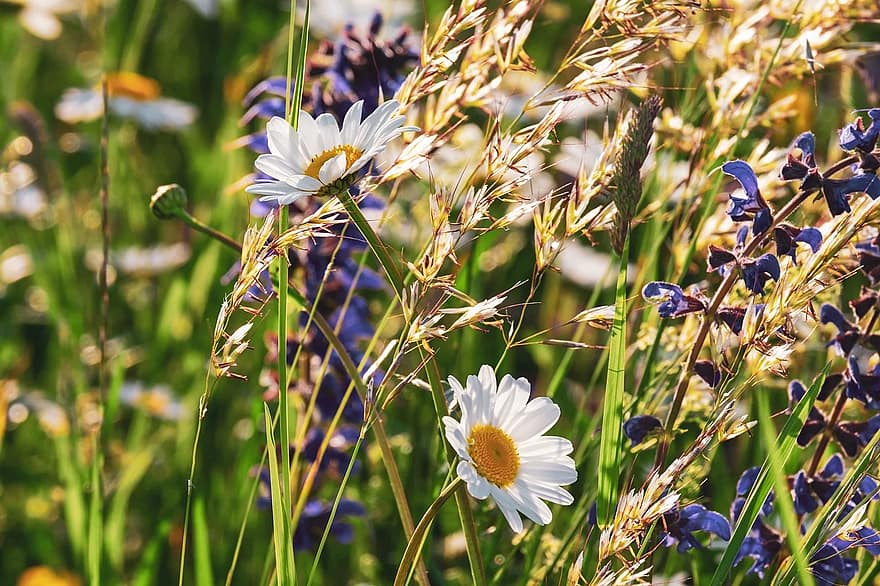Photo Credit: Pikist
If you already have a wildflower meadow or garden, you’re familiar with the hard work that goes into creating such a beautiful space for bees, hummingbirds, butterflies, and even wildlife. The good news, though, is that once established, most of the hard work is done. Caring for wildflowers requires very little from you. Even the end-of-season maintenance is minimal.
One of the best things about growing wildflowers is they have adapted over time to survive on limited resources. You often find them growing in the most bizarre places (we’ve all been amazed at the blankets of them along roadsides and in ditch banks where nothing else would think of growing) where they aren’t taken care of by anybody.
So, let’s talk about how to care for and maintain your established wildflowers! We’ll cover watering, feeding, keeping weeds at bay, seeding bare spots, and some specific seasonal maintenance.
Wildflowers need minimal watering
Compared to your prized rosebushes or your pretty tulips, wildflowers need very little water.
The first year you plant, you should give the meadow about an inch of water each week to help the plants establish. In the second year, you can water a little less frequently.
As your wildflowers mature, their root systems get fibrous and grow deep into the soil, so the plants need less water. By their third season, the beautifully colored plants are mainly self-sufficient and will thrive on their own without supplemental moisture. If you’re experiencing especially dry periods, go ahead and give them a drink.
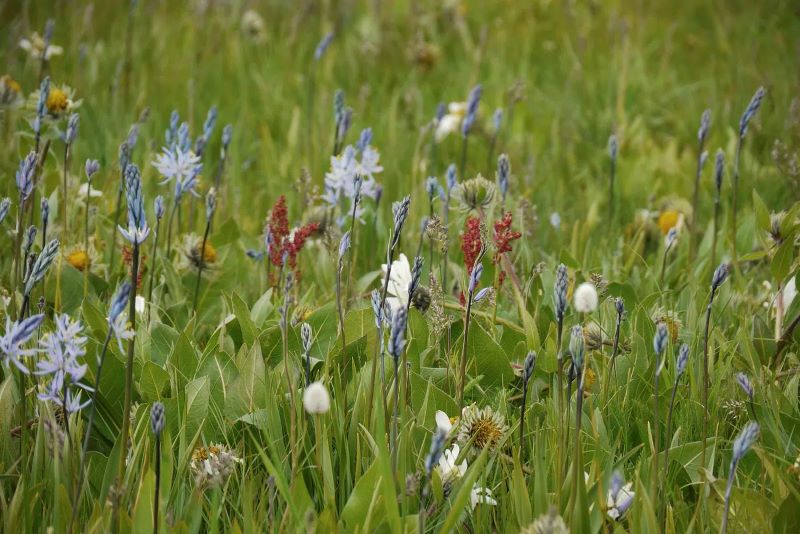 Photo Credit: Rawpixel
Photo Credit: Rawpixel
Fertilize if your soil is lacking nutrients
If your wildflowers need fertilizer depends on two things: the type of flowers you’re growing and your soil’s nutrient concentration.
It’s essential to determine whether or not your flowers even need an extra boost of nutrients. Some perennials like black-eyed Susans, coneflowers, and false indigo may even grow worse if you give them extra nitrogen, phosphorus, or potassium. Some, on the other hand, will benefit from a more fertile environment.
After determining if your wildflowers like poor soils or a fertile place to spread their roots, the next step is to check your soil quality with a soil test. If the soil contains adequate nutrients, there’s no need to add supplemental fertilizer—your wildflowers thrive on what is already available to them.
In the event your soil needs some improvement, you’ll want to fertilize judiciously. Over-fertilizing promotes weed growth and thick, lush foliage instead of promoting buds and flowering.
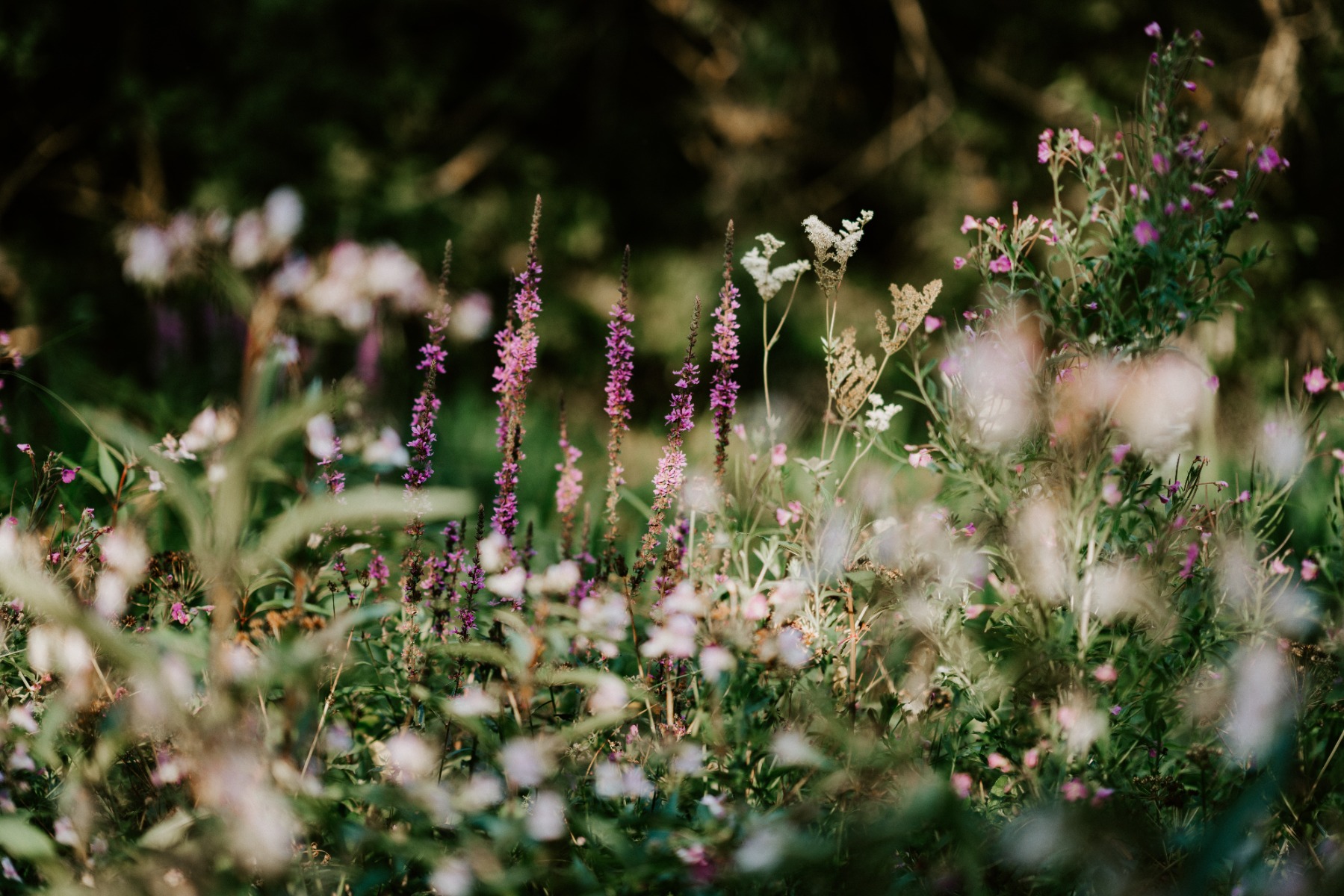 Photo Credit: Annie Spratt | Unsplash
Photo Credit: Annie Spratt | Unsplash
Use a low nitrogen fertilizer (a 5-10-10 is a great option) or add organic matter such as finished compost, leaf mold, or grass clippings to the meadow. These materials will also enhance soil structure, improve moisture retention, and encourage beneficial microbes.
For help with soil testing, take a look at these helpful Deer Creek Seed guides:
Weed out invasive competitors
Weeding your wildflower meadow is considerably different than your garden or flowerbeds. First of all, if your wildflowers grow in thickly and are healthy, they will outcompete and choke out most weeds, so weeding isn’t an issue. But if you do have weeds pop up, you really only need to get rid of the highly problematic ones.
Without a doubt, you’ll want to tackle Canada thistle, common lambsquarter, and Palmer amaranth. All three grow rapidly and proficiently reseed. If they’re left growing and develop seed heads, they’ll quickly take over your meadow.
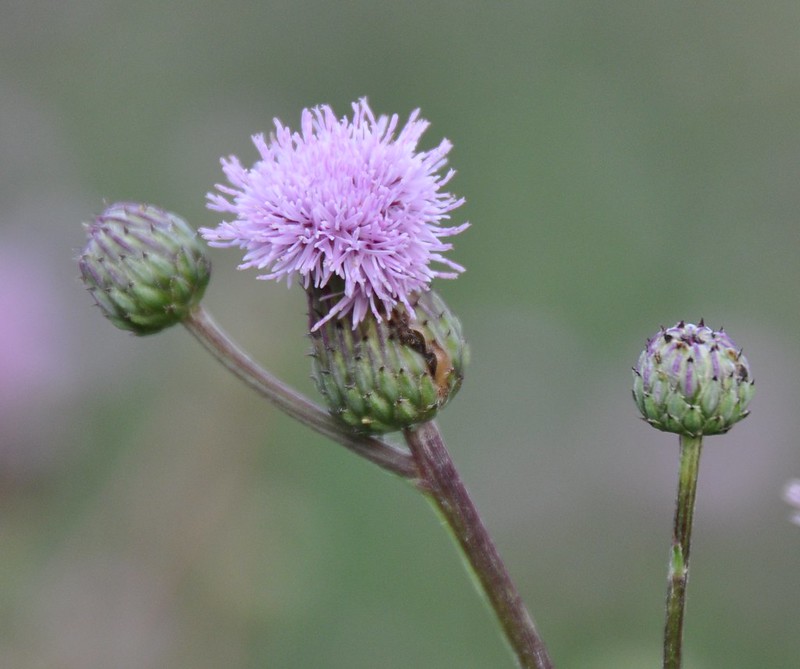 Photo Credit: Ted | Flickr | CC BY-SA 2.0 DEED
Photo Credit: Ted | Flickr | CC BY-SA 2.0 DEED
The trick with weeding, though, is you can’t blanket the meadow with an herbicide because it will severely damage or kill your wildflowers. You’ll need to go into the meadow and weed by hand or cut them off at the soil surface using shears or lopers. You could also spot-spray them with glyphosate or another broadleaf herbicide, but keep in mind you might damage neighboring plants.
Plant native grasses to suppress weeds
Another way to combat weeds in your wildflower patch is to overseed with native grasses. Some recommendations state native grasses can make up 50 to 80% of your meadow without being problematic.
- If you live in the northern US or the transition zone, consider planting little bluestem, hard fescue, sheep fescue, or Canada wild rye.
- If you live in the southern US, opt for sideoats grama, blue grama, big bluestem, buffalograss, or Lindheimer’s muhly.
Avoid aggressive growers like Kentucky bluegrass, Bermuda, and annual ryegrass, as they’ll crowd out your flowers.
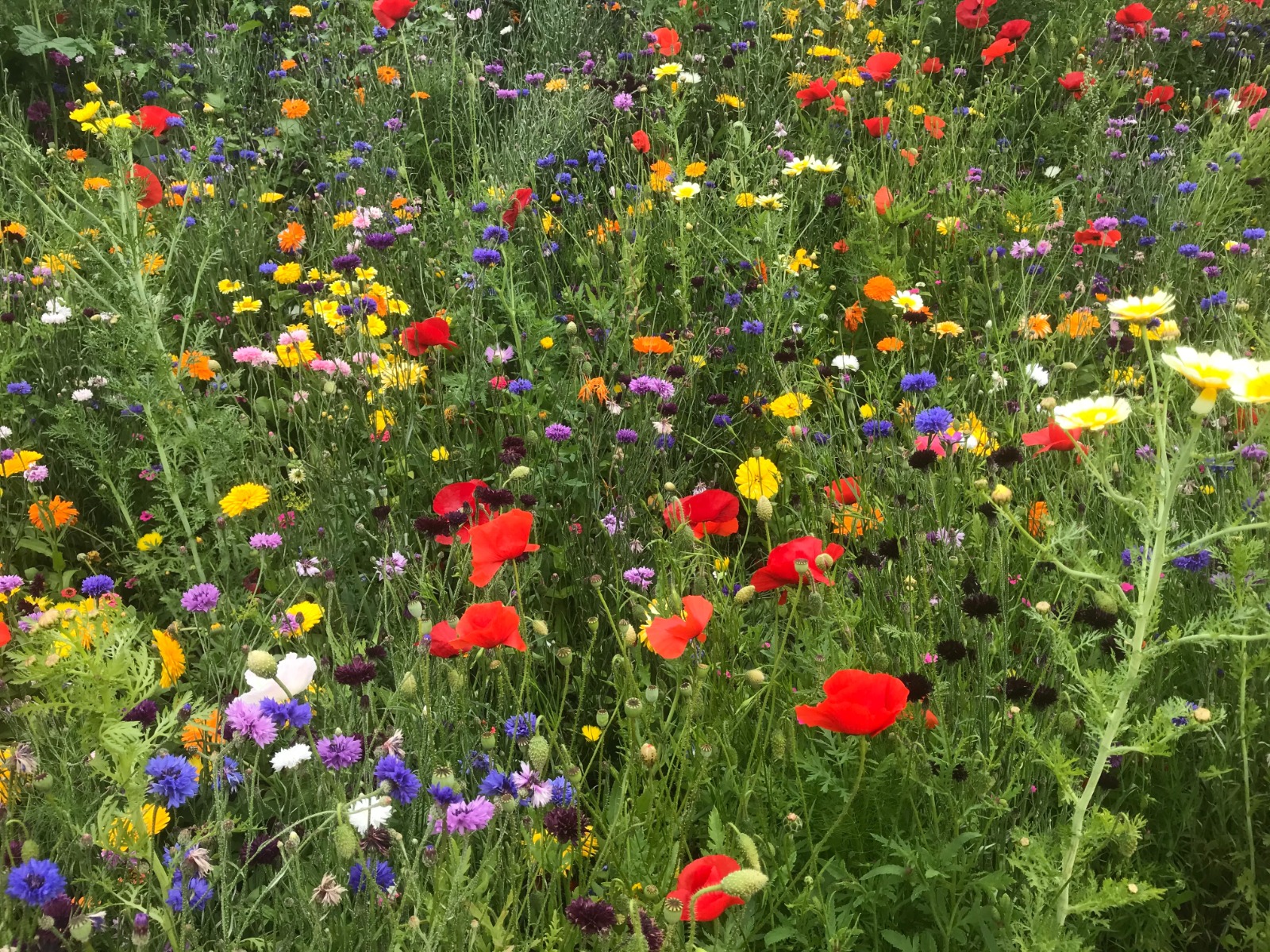 Photo credit: Leslie Bowman | Unsplash
Photo credit: Leslie Bowman | Unsplash
Seed bare spots
It’s not unusual to have bare spots appear in your meadow, especially after the second or third growing season. If you’re seeing bare spots, it’s time to scatter some seeds and get that ground covered!
- First, calculate how much seed you’ll need to purchase to cover the seedbed. The recommended seeding rate is one-half pound of seed per 1,000 square feet.
- Mix one part seed with four parts sand to help spread the seeds more evenly. Plus, since sand is lighter colored than seed, you’ll be able to see better where you disperse them.
- Take half of the sand and seed mixture and walk back and forth in one direction (east to west or north to south), scattering seeds by hand, sweeping continuously back and forth in front of your body.
- Grab the other half of the mixture and scatter the seed in the other direction. When finished, you’ll have a crosshatch pattern across the seed bed.
- Rake the seeds lightly to put them in good contact with the soil without burying them.
- Tamp down the seeds with a lawn roller or cultipacker.
- Add a thin layer of straw to hold seeds in place and keep birds from snacking on them.
Deer Creek Seed options
Looking for wildflower seeds for your meadow? Deer Creek Seed has you covered with a variety of high-quality seed mixes.
- All Perennial Wildflower Mix
- North American Shade Wildflower Mix
- Midwestern Wildflower Mix
- Low Grow Wildflower Mix
- Deer Proof Wildflower Mix
- Honey Bee & Pollinator Wildflower Mix
- Native Wildflower & Forbs Mix
Fall wildflower meadow cleanup
Before winter rolls in, it’s important to do some critical fall maintenance. If you’re going to do anything all year, this is the one thing you should focus on getting done.
- Remove as many dead plant stalks as possible.
- Pull weeds like thistles and common lambsquarter when the soil is moist. You want to pull them before they go to seed. Be careful to avoid disturbing the soil.
- Mow the meadow about two weeks after the flowers wilt and turn brown. Set the mower height to about 4 to 6 inches. Be sure to wait until the plants have gone to seed to help thicken spring growth.
Spring meadow maintenance
In early spring, you should cut the meadow down to about 3 to 4 inches tall if you’ve got a lot of grass growing amongst the wildflowers. Mowing the grasses down gives the establishing wildflowers better access to sunlight, giving them a boost. Make sure to remove the cuttings so you don’t smother the establishing plants.
Need help with your wildflowers?
We’re committed at Deer Creek Seed to helping you grow the very best crop possible, whether it be alfalfa, purple top turnip, or wildflowers. If you need help choosing the best wildflower seeds to plant, have questions about soil sampling, or are having problems with your meadow, contact us!
Our purpose at Deer Creek Seed is to provide the highest quality seed suited to your needs, at competitive prices, with exceptional customer service. We recognize that the seed business is a “forever business.” To sustain this, we will remain relevant to the people that purchase our products and supportive of our staff which works diligently to serve our customers.
Additional Resources
- Need help choosing a site or a wildflower seed mix to fit your needs? The University of New Hampshire spells it all out in this helpful resource.
- Site preparation is key to getting your wildflower meadow off on the right foot. The Ecological Landscape Alliance walks you through all the steps of prepping a new site.
- Learn all about native plants over at the University of Illinois Urbana-Champaign extension page.
- Need help creating the best soil for your wildflower meadow? Deer Creek Seed has all the information you need.



